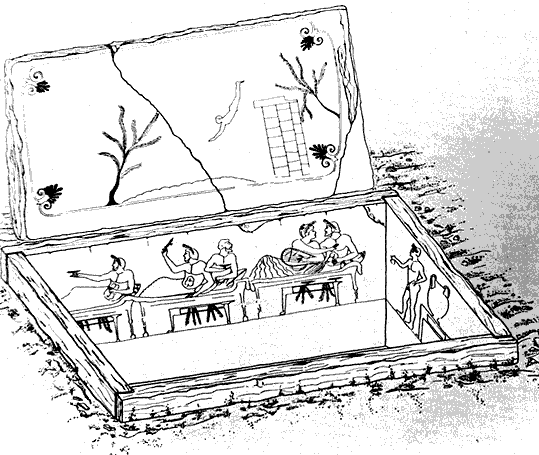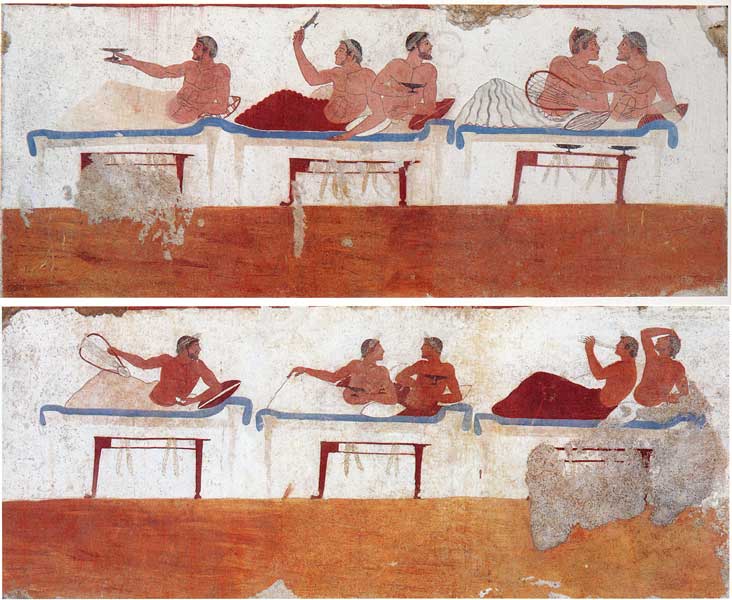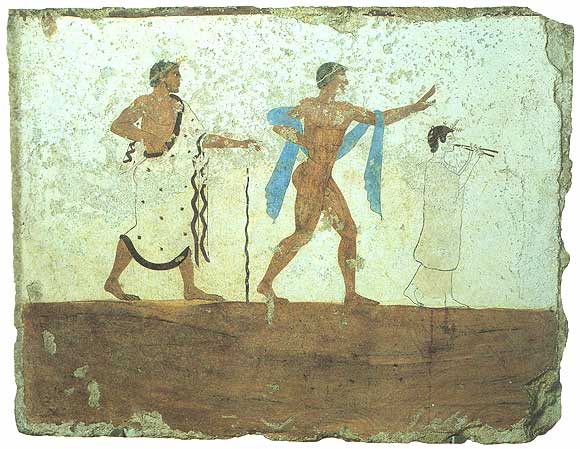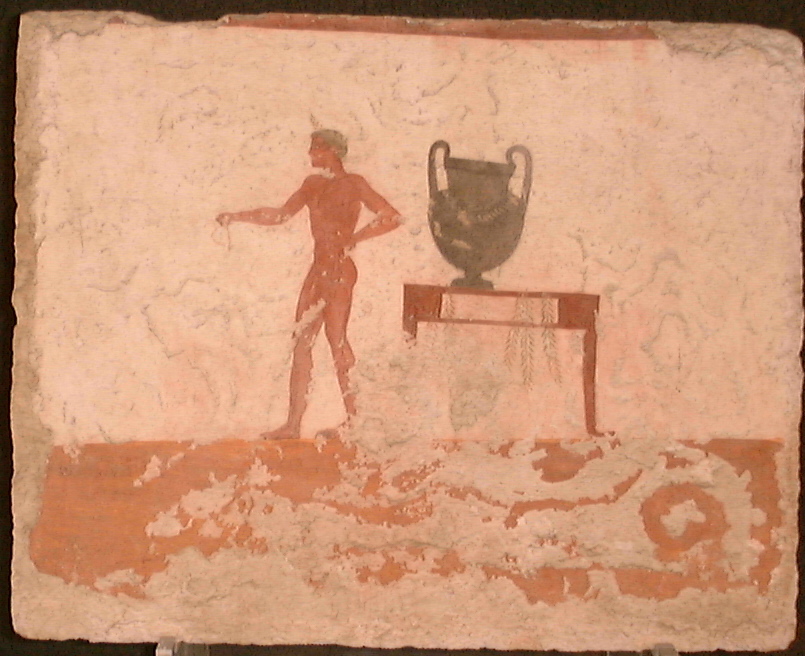The Tomb of the Diver was found by Mario Napoli in June of 1968, near the city of Paestum located in Magna Graecia. The significance of this particular tomb is that it contains the only example of Greek wall painting from the Orientalizing, Archaic, or Classical period to survive in entirety. The tomb was created some time around 470 B.C.E. in the Greek city of Poseidonia (later know as Paestum in Roman times). The tomb itself is made of five limestone blocks, each from a local source. The paintings were done in the fresco style. Plaster was applied to the limestone slabs, after which a stylus was used to incise the design. After the design was incised with a line a thin red line was added to render the image. The colors used were black, red (of varying degrees of darkness), blue, green, and white. Black outline was used substantially, for both silhouetting the figures and later for adding anatomical detail to the figures. The black outlining was not done initially, as was common in other painting styles, the “internal anatomy and their outlining were added after the flesh tone had been painted on the plaster” (Holloway).

The images on the walls of the tomb are depictions of a symposium. Attic painted pottery of the time featured similar images of the symposium. Red figure cups and wine-mixing vessels, that were intended for use at the symposium, were decorated similarly. On each of the longer walls within the tomb (north and south) there are three couches with serving tables. There are five individuals on the couches on each wall, there is a single “symposiast” on the left couch and the other two couches are occupied by two people. Each of the figures is covered to the waist, and they are all crowned. The north wall features a single man who is about to play the “kottabos” game (Holloway). The south wall features a single man holding a lyre while two other individuals sit on the couch and converse.

The short western wall depicts a single man leaving the symposium, in front of him there is a girl playing a flute, who is followed by a man wearing a himation.The east wall depicts a serving boy next to the krater, a large vessel used for mixing wine that was often at the center of the symposium.


The image on the slab that forms the roof is an image of a diver, where the tomb draws it’s name. Unlike the common symposium scene images of divers are almost completely unknown in Greek art. The anatomy of the diver is very detailed. The ribs are drawn in a “complicated pattern,” and his legs and arms are “clearly delineated.” His genitals were very carefully drawn and there is a small growth of hair added to his chin (Holloway).. This figure is fully outlined in black.
The diver scene has been interpreted in various ways. Death and diving were connected in the Greek mind. It is suggested that the dive is meant to depict the moment of death. “the diver dives alone, isolated against the sky. There is present all the intensity of the moment of death.” It is also suggested that the individual was the member of a family group that was not integrated amongst the citizens of Poseidonia. The tomb shows deviation from the normal, and it is also a sign of political integration through the symposium. The individual that was buried choose to respond to the codes governing the symposium by depicting the idea that "the pleasure of wine drinking is unequivocally projected beyond life" (Cipriani).
Sources:
Biers, William R. The Archaeology of Greece. New York. Cornell University Press, 1980.
Cipriani, Marina. The Lucanians in Paestum. Vol. 1. Pæstum, Italy: Fondazione Pæstum, 1996.
R. Ross Holloway. The Tomb of the Diver, in American Journal of Archaeology, Vol. 110, n. 3, July 2006 (pp. 365-388) (English)
Posted at Dec 13/2007 11:54PM:
Harry Anastopulos: Very nice. I'm also in an Etruscan archaeology course this semester, and this particular tomb was one of those that greatly influenced Etruscan tomb painting (further to the north in Italy) of this period.
